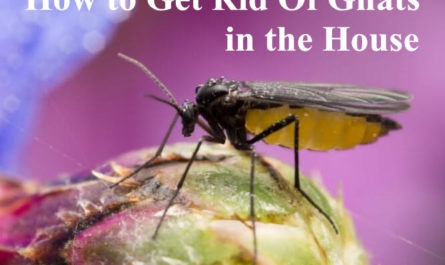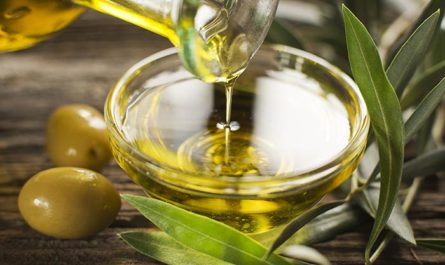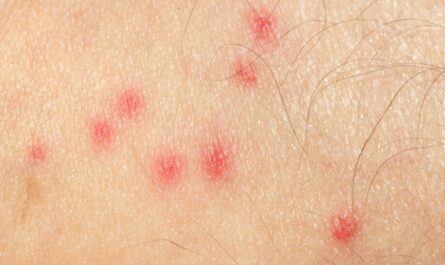Fleas are small yet troublesome pests that can make life miserable for pets and owners. They are flightless insects, approximately 2.5mm long, and are notorious for their remarkable jumping abilities. A flea infestation can cause various problems, from mild discomfort to severe health issues. For pets, the constant itching and scratching can lead to hair loss, inflammation, and skin infections.
For humans, flea bites usually result in small, itchy bumps around the ankles and lower legs. In some cases, people can also develop an allergic reaction to flea bites. Besides the physical discomfort, a flea infestation can also cause psychological stress and anxiety. Thankfully, there are many ways to get rid of fleas. This article will discuss the 12 best natural remedies to get rid of fleas fast.
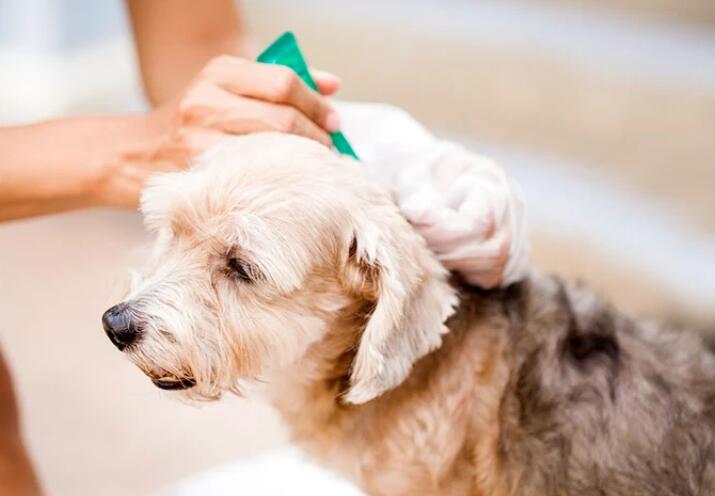
Life Cycle of Fleas
Fleas are small, wingless insects that feed on the blood of animals and humans. Understanding the flea life cycle is essential to controlling and preventing flea infestations. Fleas have four life stages: egg, larva, pupa, and adult. The entire flea life cycle can last from a few weeks to several months, depending on environmental conditions.
- Egg: Flea eggs are tiny, white, and oval-shaped. They are laid on the host animal’s fur and can fall onto carpets, bedding, and furniture. Flea eggs hatch within 1-12 days, depending on temperature and humidity.
- Larva: Flea larvae are worm-like and feed on organic matter, including flea feces and skin cells. They avoid light and burrow into carpets, bedding, and furniture. Flea larvae molt three times before spinning a cocoon and entering the pupal stage.
- Pupa: Flea pupae are protected by a cocoon and can remain dormant for several months. They are resistant to insecticides and can survive vacuuming and other cleaning methods.
- Adult: Flea adults emerge from the cocoon when they detect vibrations, heat, or carbon dioxide. They can jump up to 7 inches vertically and 13 inches horizontally to reach a host animal. Female fleas can lay up to 50 eggs daily and live for several months.
How to Identify a Flea Infestation
Identifying a flea infestation early on is crucial to prevent it from becoming a full-blown problem. The most common sign is the incessant scratching and biting of your pets. You may also notice small, red, itchy bumps on your own skin, particularly around the ankles and lower legs.
A closer inspection of your pet may reveal flea dirt, which looks like small black or brown specks in the fur. Flea dirt is actually flea feces composed of undigested blood. If you spot actual fleas or flea eggs (tiny white specks), then you’re dealing with an infestation.
Checking your home for signs of fleas is also important. Look for flea dirt or actual fleas in pet bedding, carpets, rugs, and other areas where your pets spend a lot of time. Fleas prefer dark, humid places, so don’t forget to check under furniture and in cracks and crevices.
How do Fleas Infest Your Home?
Fleas can enter your home through various means, and it’s crucial to understand their common entry points to prevent infestations. Here are some common ways fleas can infest your home:
- From the backyard: Fleas can easily jump onto your pet from the yard and be carried inside.
- Other pets entering your home: If you regularly have other people’s pets over, it increases the likelihood of fleas.
- Your pet’s exposure to other animals: Interactions at dog parks, vet clinics, or encounters with stray animals can lead to flea infestations.
- The neighborhood: If fleas are present in your neighborhood, they can hop onto you or your pet during walks.
Identifying the exact source of a flea infestation can be challenging. That’s why it’s crucial to take preventive measures and implement protective strategies.
Step-by-Step Guide to Eliminating Fleas
To effectively eliminate fleas from your home and yard, it’s important to approach the problem comprehensively. Simply treating your pet is not enough, as fleas can spread throughout your entire living space. Follow these steps to eradicate fleas:
Step 1: Treat Fleas on Your Pet
Begin by treating the fleas on your pet. Use a fast-acting flea treatment product designed for your pet’s size and species. Make sure to cover all pets in your household, even if you only see fleas on one of them. Treating all pets will minimize the risk of re-infestation.
Step 2: Cleanse Your Pet’s Belongings
To prevent fleas from hiding in your pet’s bedding and toys, wash these items in hot water. Hot water kills fleas, larvae, and eggs effectively. If certain items cannot be washed, quarantine them in plastic bags until the infestation is under control. Consider replacing any items that cannot be thoroughly cleaned.
Step 3: Treat Fleas Around Your Home
Treating the areas where your pet spends most of their time is crucial to eliminating fleas from your home. Use a flea spray specifically designed for household use. Apply the spray to hard-to-reach areas such as upholstery, cracks, and crevices. Additionally, treat your carpets with a flea spray or powder.
Step 4: Cleanse Your Belongings
Wash all bedding, including yours and your family’s, in hot water. Fleas can hide in bedding, so thorough cleaning is essential. Don’t forget to wash bathroom rugs and throw blankets that your pet frequently uses. Regularly washing bedding until the infestation is resolved is vital.
Step 5: Treat Fleas in Your Yard
Fleas can infest your yard and reintroduce themselves into your home. Treat your yard with a flea-killing spray specifically formulated for outdoor use. Pay special attention to areas where your pet spends time, such as their favorite resting spots. Additionally, consider spraying your shoes and pant legs with flea spray when coming indoors from the yard.
Step 6: Repeat the Process
Flea infestations can be persistent, so it’s crucial to repeat the above steps every 3-4 weeks for several months. This ensures that any newly hatched fleas are also eliminated. Keep in mind that fleas can lay dormant for months, so consistent treatment is necessary to fully eradicate them.
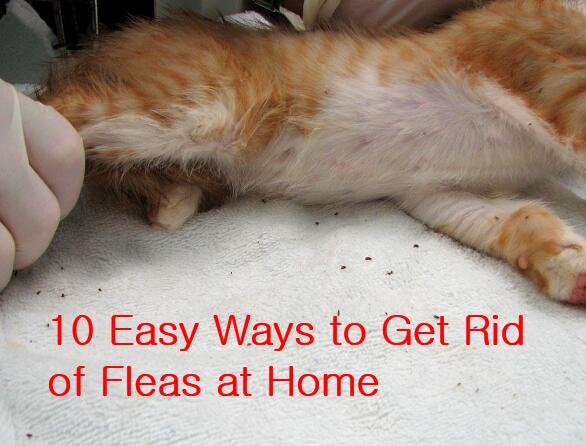
10 Best Home Remedies for Flea Removal
While commercial products are the most effective way to eliminate fleas, some home remedies can be used as supplementary measures. Here are a few natural remedies you can try:
1. Flea Removal with Baking Soda
Baking soda, or sodium bicarbonate, works as a desiccant, which means it dehydrates and eventually kills the fleas. It’s a safe and gentle method for both your home and pets.
- Sprinkle a generous amount of baking soda on your carpets, furniture, and your pet’s bedding.
- Gently work the baking soda into the fabric or carpet using a broom or brush.
- Leave it for a few hours or even overnight.
- Vacuum the treated areas thoroughly to remove dead fleas and baking soda.
2. Dawn Dish Soap – A Quick Solution
Dawn dish soap creates a soapy surface that traps and drowns fleas. It’s a simple and effective solution for instant relief.
- Fill shallow bowls with warm water.
- Add a few drops of Dawn dish soap and mix it gently.
- Place the bowls in areas where you’ve spotted fleas or where your pets frequent.
- Fleas will be attracted to the warmth and light, jump in, and get trapped in the soapy water.
3. The Power of Diatomaceous Earth
Diatomaceous Earth is a natural product that has sharp edges, which cut through the fleas’ exoskeleton, causing them to dehydrate and die.
- Sprinkle a fine layer of food-grade Diatomaceous Earth in areas where you suspect fleas.
- Leave it for a few days.
- Afterward, vacuum thoroughly to remove both the Diatomaceous Earth and dead fleas.
4. Lemon Spray for Fleas
Lemons contain natural citrus oils that repel fleas. When used in a spray, it discourages fleas from infesting your home.
- Slice a few lemons and boil them in water.
- Let the solution cool down.
- Pour the lemon-infused water into a spray bottle.
- Spray it on infested areas and pet bedding.
5. Salt – A Natural Desiccant
Salt acts as a desiccant, absorbing moisture and dehydrating fleas. It’s an easy and cost-effective solution.
- Sprinkle table salt evenly on your carpets and other flea-prone areas.
- Leave it for 1-2 days.
- Vacuum the treated areas thoroughly to remove both salt and dead fleas.
6. Lavender Oil – Flea Repellent
Lavender oil’s pleasant scent repels fleas, making it an excellent choice for natural flea prevention.
- Mix a few drops of lavender essential oil with water in a spray bottle.
- Shake well and spray it on your pet’s bedding and around the house.
7. Homemade Flea Traps
Homemade flea traps use light and soapy water to attract and trap fleas. They’re a simple yet effective way to reduce flea numbers.
- Place a shallow dish filled with soapy water on the floor.
- Position a desk lamp or flashlight above the dish to attract fleas.
- Leave it overnight, and the fleas will jump towards the light and get trapped in the soapy water.
8. Rosemary Repellent
Rosemary has a pleasant scent that repels fleas. Using it as a dip for your pets can help keep fleas at bay.
- Boil a pot of water and add a handful of fresh rosemary leaves.
- Let it steep for a few hours.
- Remove the leaves and use the cooled rosemary water as a dip for your pets.
9. Vacuum, Vacuum, Vacuum
Vacuuming not only removes adult fleas but also their eggs and larvae. It’s crucial in maintaining a flea-free environment.
- Vacuum all carpets, rugs, and upholstered furniture.
- Pay extra attention to areas where your pets spend time.
- Dispose of the vacuum bag or clean the canister promptly to prevent fleas from returning.
10. Steam Cleaning
Steam cleaning effectively kills fleas and their eggs hiding deep within carpets, upholstery, and other fabrics.
- Rent or purchase a steam cleaner designed for home use.
- Vacuum the area thoroughly to remove any surface dirt and debris.
- Fill the steam cleaner with water according to the manufacturer’s instructions.
- Slowly pass the steam cleaner over the infested areas, focusing on high-traffic spots and places where your pets rest.
- Allow the treated areas to dry completely before allowing pets or family members to contact them.
11. Use Essential Oils
Certain essential oils have natural properties that repel fleas. Using these oils can create a less attractive environment for these pests.
- Choose essential oils such as lavender, eucalyptus, citronella, or cedarwood.
- Mix a few drops of the chosen essential oil with water in a spray bottle.
- Shake the bottle to ensure the oil and water are well-mixed.
- Spray the mixture on your pet’s bedding, furniture, and other areas where fleas are likely to hide.
12. Homemade Flea Spray
Creating your own flea spray is a cost-effective way to combat these pests without relying on harsh chemicals.
- Fill a spray bottle with water and add a tablespoon of white vinegar.
- Optionally, add a few drops of essential oils like lavender or lemon for added effectiveness and a pleasant scent.
- Shake the bottle well to mix the ingredients.
- Lightly spray the mixture on your pet’s fur, avoiding the eyes and face area.
- You can also use this spray on your pet’s bedding, furniture, and other areas where fleas may be present.
Preventing Flea Infestations
Preventing fleas from infesting your home is crucial to avoid future problems. Here are some preventive measures you can take:
- Use flea prevention products: Regularly apply flea prevention treatments to your pets, such as spot-on treatments, flea collars, or oral medications. Consult with your veterinarian to determine the most suitable options for your pets.
- Maintain a clean environment: Regularly vacuum your home, paying close attention to areas where your pets spend time. Wash your bedding and your pet’s bedding regularly to prevent flea infestations.
- Keep your yard tidy: Trim your lawn regularly and remove any debris or clutter where fleas might hide. Consider using a flea control product specifically designed for outdoor use.
- Avoid contact with stray animals: Stray animals can carry fleas, so it’s best to avoid contact with them. If you encounter a stray animal, consult with your veterinarian for the best course of action.
By implementing these preventive measures, you can significantly reduce the risk of flea infestations and keep your home and pets flea-free.
When to call a professional?
First and foremost, if you’ve tried everything – from flea collars and spot-on treatments to using flea bombs – and yet these tiny pests are still hopping around your home, it’s definitely time to call in the professionals. Don’t let those fleas get the best of you!
Another surefire sign is if your pet is constantly scratching or has developed a flea allergy dermatitis. This can be incredibly uncomfortable for your four-legged friend, and it’s not something you should try to tackle on your own.
Lastly, if the infestation has spread to multiple areas of your home, it’s time to bring in the cavalry. Fleas can lay their eggs anywhere and everywhere, from your carpets and furniture to your pet’s bedding. An infestation this large needs a systematic treatment plan that only a professional can provide.


